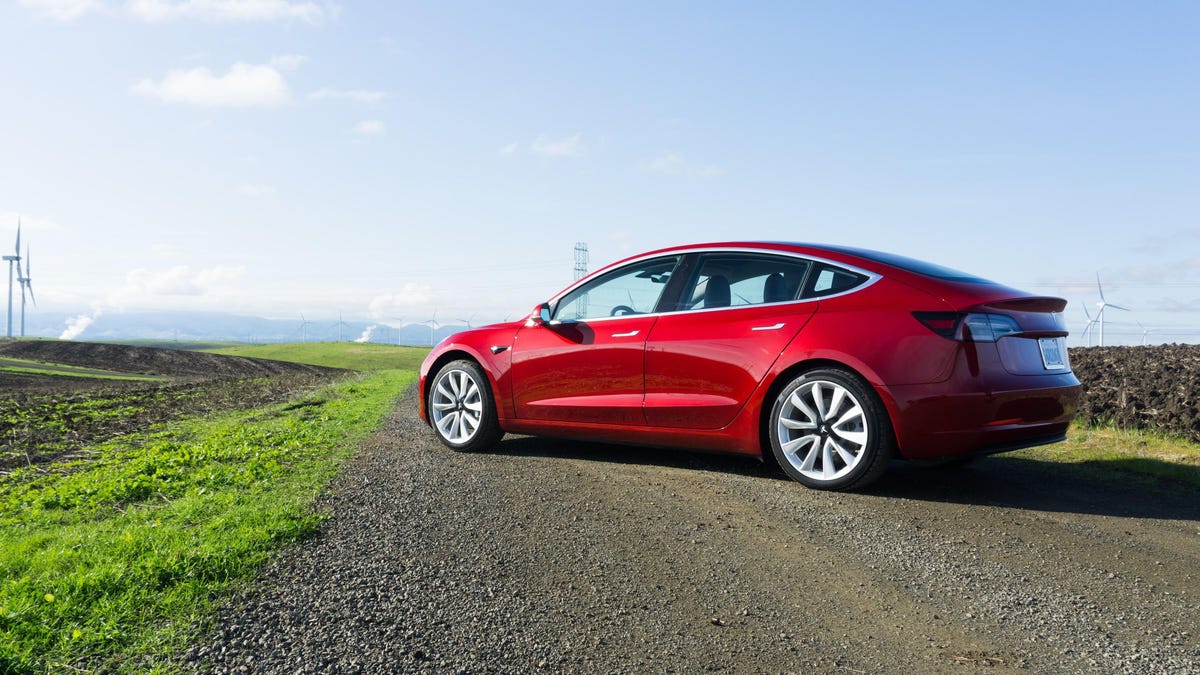Tesla changed its testing regimen for the Model 3, and that's OK
People's reaction to Tesla's cessation of the brake-and-roll test is more than a little overblown, and here’s why.

If Tesla's struggle to produce the Model 3 in significant quantities has taught the general populace anything, it's that manufacturing a car is complicated. In addition to the hundreds upon hundreds of steps and processes that a vehicle must undergo during its build process, it must also pass series of rigorous tests in order to be deemed worthy of customer delivery.
We, along with many other publications, regularly ding Tesla in particular on things like fit and finish, panel gaps and so forth because that stuff is incredibly difficult to get right on a new production line. It takes time and expertise from the people designing the processes to build the car, programming the robots, making parts, and definitely the people assembling the vehicle on the line and it's something that Tesla appears to be genuinely trying to improve.
As the manufacturing process matures, so, too, does the testing process to validate the safety of each vehicle being produced. Oftentimes this means altering tests or removing them altogether if they're found to be redundant. It's this last one that's of interest to us now, specifically as it pertains to Tesla.
Space is tight at Tesla's Fremont factory, one factor which led the company to stop the brake-and-roll test, in favor of actually driving each Model 3.
Business Insider recently published a piece titled, " Elon Musk ordered Tesla engineers to stop doing a critical brake test on Model 3s," in which it lambasted the company for reducing the stringency of its Model 3 testing procedures by eliminating the brake-and-roll test. The test is designed to simulate real-world driving conditions in the factory environment. It measures factors such as acceleration, brake function and ABS to verify that everything was built properly.
For most manufacturers, the brake-and-roll test is used as a time saver to prevent having to physically drive vehicles on a test track, something that requires time, space and personnel. Tesla is currently at a stage in Model 3 production where it feels that it physically needs to have each and every Model 3 that rolls off the line driven on an actual test track to make sure that power, torque, brakes, alignment, and of course squeaks and rattles are within spec. This makes the brake-and-roll test redundant, and a company in the midst of a production ramp like Tesla's can't afford redundancies.
A brake-and-roll test machine uses rollers and sensors to simulate real-world driving conditions.
Tesla has confirmed to Roadshow that its brake-and-roll testing and on-track testing procedures are identical. Both tests begin by burnishing (or bedding-in) the brakes by accelerating to 60 miles per hour and then decelerating down to five mph. This is done three times in relatively quick succession and is fairly standard practice across the industry. Next, the vehicle's anti-lock brake system is checked for functionality. This is done by running the vehicle up to speed and triggering the system by braking hard. If the ABS triggers, the vehicle is passed and if it doesn't, it isn't. Finally the vehicle is brought to 60 miles per hour and then coasted down to a stop -- this measures drivetrain drag.
While every Model 3 currently being produced gets driven on a track, Tesla doesn't expect that policy to continue either. Once the assembly process becomes a known quantity, with inefficiencies and errors ironed out, the average quality of the vehicles will go up, meaning there will be less likely to be wrong with any vehicle that rolls off the line. At that point, Tesla will change over to the same spot checking policy that it uses on Model S and Model X, both of which are by now well established in terms of manufacturing.
In summation, things in Fremont might not be all sunshine and umbrella drinks, but it doesn't appear that Tesla has cut any corners relative to safety in its quest to ramp up Model 3 production to 5,000 units per week. This is a case of an imperfect company trying to iron out the kinks in a complex process while under a great deal of public scrutiny.

